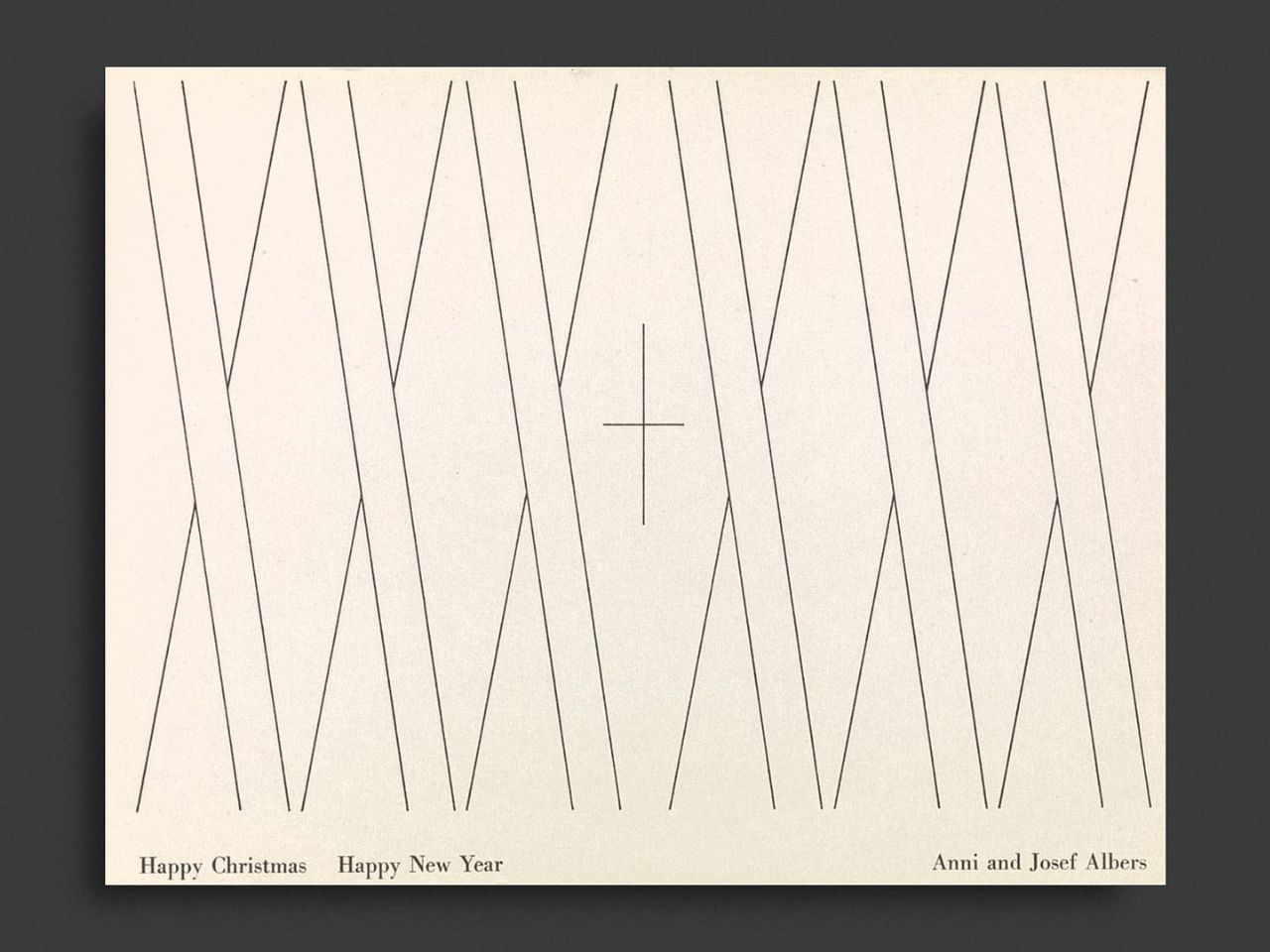Among the many legacies of the Bauhaus movement, the partnership of Josef and Anni Albers stands as a testament to the enduring power of art, love, and mutual respect. Despite being two of the most influential figures of modern design, their creative paths rarely converged. However, for over half a century, the couple collaborated on a singular artistic endeavor: designing holiday cards. These cards not only reflect their unique perspectives but also provide an intimate glimpse into how the Alberses celebrated the holiday season.
Designer: Josef and Anni Albers
The Bauhaus school, founded in 1919 in Weimar, Germany, stood as a revolutionary institution that redefined art, architecture, and design. It emphasized the unity of art and craft, promoting the idea that functional objects could also be beautiful. Central to its philosophy was the principle that form follows function—designs should serve practical purposes while maintaining aesthetic value. This integration of artistry with practicality resonated deeply with Josef and Anni Albers, shaping their creative pursuits and leaving an indelible mark on modern design.
The Albers’ artistic journey began at the famed Bauhaus school in 1922, where they first met. Married in 1925, they spent the next five decades as a two-person artistic powerhouse. Josef, a painter, and Anni, a weaver, remained steadfast in their respective disciplines, deeply respecting each other’s work but rarely combining their talents. According to Nicholas Fox Weber, executive director of the non-profit Josef & Anni Albers Foundation, this mutual admiration was the cornerstone of their relationship. “She was the weaver and he was the painter, and neither was going to get into the other’s realm,” Weber explains. Yet, they made an exception for the holidays, crafting cards to commemorate Easter, New Year’s, and Christmas.
Far from conventional greetings, the Albers’ holiday cards are design-centric masterpieces that reflect their innovative Bauhaus principles. The first recorded card in the Foundation’s collection dates back to 1934, shortly after the Bauhaus’ closure due to Nazi political pressures. That year marked a new chapter for the couple as they relocated to the U.S. and began teaching at Black Mountain College in North Carolina. This environment inspired the Albers’ earliest Christmas cards, characterized by their simplicity and adherence to the Bauhaus ideals of functionality and form.
The 1934 card exemplifies these principles with its clean, red, all-caps typography and balanced asymmetry. Over the years, their designs evolved, showcasing a growing fascination with geometry, minimalism, and process. Cards from the 1950s, for instance, feature abstract explorations of line and shape, often rendered in monochrome palettes. A 1951 card uses a partially erased grid to suggest a Christmas tree, while a 1952 design employs a pattern of white dots reminiscent of Anni’s groundbreaking textile work.
The Alberses celebrated Christmas with a simplicity that mirrored their design philosophy. They spent the holiday quietly at home, listening to Bach’s Goldberg Variations. “When you look at the holiday cards, you can practically imagine the clarity of the Goldberg Variations: a lightness, a certain rhythm,” Weber notes. The cards’ meticulous craftsmanship extended to their construction, with many friends framing them as cherished art pieces.
Anni’s childhood memories of lavish Christmas feasts in her wealthy family’s homes—featuring delicacies like beluga caviar and ice cream cakes—contrast with Josef’s more modest upbringing. Yet, these stories became a source of joy for Josef. In 1975, their close friend Weber recreated one of these extravagant meals for the couple. This celebration turned out to be their last Christmas together, as Josef passed away the following March.
The post How Bauhaus Legends Josef and Anni Albers Transformed Holiday Cards into Timeless Works of Art first appeared on Yanko Design.

